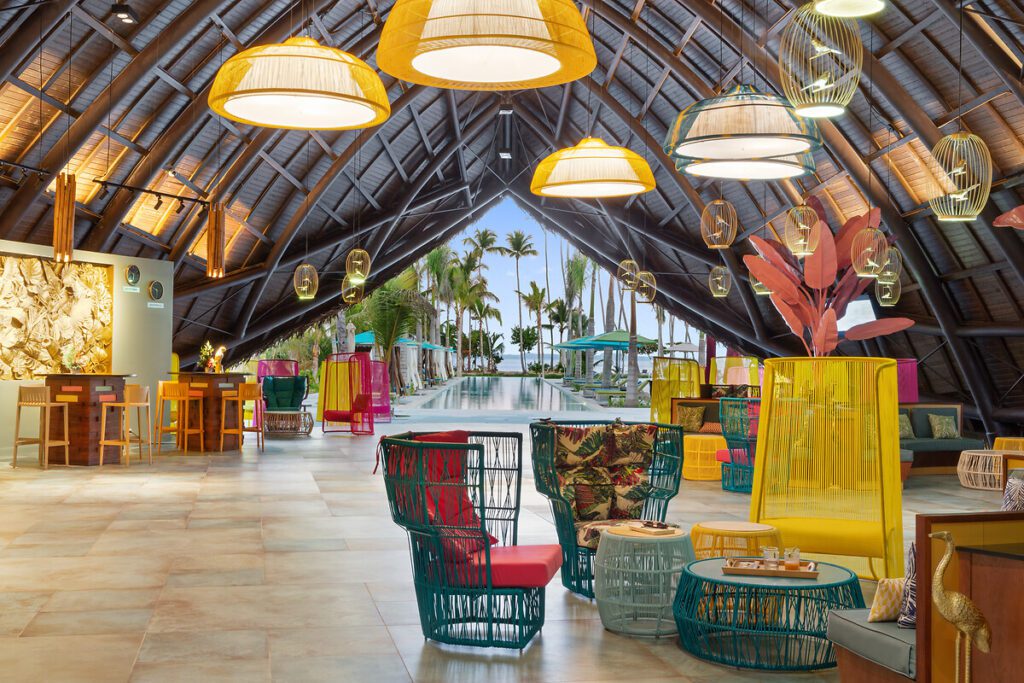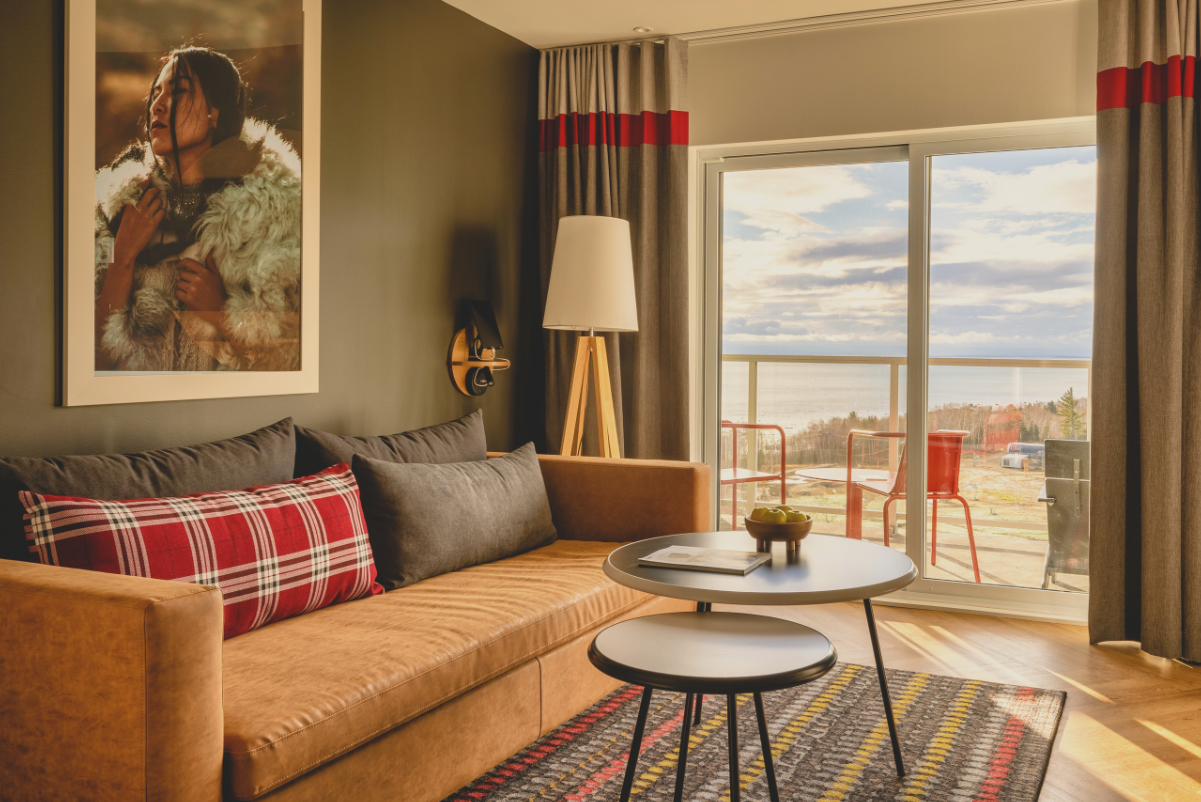Skift Take
It's reassuring to see numerous Club Med all-inclusive resorts rebounding post-pandemic and that the company has upgraded many to attract affluent millennial parents. But some experts question its new marketing campaign and strategy.
Club Med has had more re-inventions than Justin Timberlake. But the all-inclusive brand run by Chinese conglomerate Fosun International thinks it can finally bring the sexy — and profit — back to its 70 getaways that arc from Bali to China’s Hainan Island to the French Alps and Florida.
Marketing will help, it thinks. On April 4, Club Med revealed a refreshed brand identity to customers and travel agents and its ambition to become “a more premium, family-friendly, and eco-conscious experience.” More on that below.
But first, let’s get some financial context. Back in 2018, Fosun Tourism Group —the unit that houses Club Med — sold shares in the company. That transaction gave the tourism unit an implied market capitalization of $2.4 billion. Today its market capitalization is only $1.59 billion — a third less.
Last November, Bloomberg News reported that Fosun International was contemplating whether to sell Club Med.
But this week, Fosun Tourism co-president Xu Bingbin told CNBC that Club Med is “definitely not for sale.” He did say, however, that his company is opening to finding “partners” to help grow its business.
Fosun Tourism released its 2022 financials last Thursday, reporting global Club Med sales of $1.75 billion, returning to 99 percent of what they were in 2019.
On the downside, Club Med has long generated profits as skimpy as a string bikini. Its 2022 operating profit was about $110 million (€98 million), compared to approximately $57 million in 2018.
On the bright side, the company’s resorts have, on average, recovered 99 percent of their pre-pandemic business volume — and that’s before China’s domestic and outbound international travel have fully rebounded.
Yet debt remains something to watch. As of June 2018, the tourism division of Fosun had approximately $700 million in net debt. As of December 2022, its net current liabilities were about $480 million, or 56 percent of its total assets.
As context: earlier this month, the larger Fosun conglomerate sold off stakes in four non-travel businesses for almost $1 billion, as Skift reported. That was nearly the price Fosun paid — about $968 million — to become the majority shareholder of Club Med in 2015.

Shifting Upmarket With New and Refreshed Properties
In the past decades, Club Med has strived to go upmarket. To use the words of the Los Angeles Times, it’s aimed to go from “socialist tent camp to sex haven to high-thread-count sheets.” Back in 2016, Club Med’s leadership told Skift Global Forum about plans to move upmarket and target affluent millennial families.
But fine-tuning a six-decade-old brand with many hard assets is costly and time-consuming. The company said last week that 97 percent of its resorts are now “premium.” It recently said it would be “phasing out” properties below its “four tridents” rating system, which make up less than 20 percent of its system.
One example of the new Club Med is its just-opened $200 million Club Med Tignes. It’s a 430-bed property with modern construction and design using local stone and larch wood materials and brightly colored furnishings and murals. Room-plus-airfare packages run $3,500 a person in peak season. Packaging prices opaquely and wholesale deals with airlines help make the economics work.
This month, the company said it had completed a renovation worth about $11 million (more than Є9 million) on Club Med 2, a five-masted ship with 184 cabins and a Mediterranean aesthetic.
In May, Cook’s Club lifestyle hotel brand is debuting a property in Rhodes, Greece, marking that premium brand’s 10th property.
New Marketing
Given all the renovations and new products, Club Med executives believe the time is now for marketing to help update consumer perceptions.
Club Med this week launched an ad campaign meant to convey the shift. The campaign emphasizes “L’Esprit Libre” and aims to capture the sensation of “utter disconnection and enjoying a carefree lifestyle where every detail of your vacation is taken care of.” Its imagery emphasizes the group’s 20-odd luxurious “Exclusive Collection” resorts.
“The campaign is on-trend with the general ‘premiumization’ of travel that we seem to be observing, where many brands across categories seem to want to capitalize on a seemingly higher capacity and appetite for luxury in the U.S. and around the world,” said Makarand Mody, associate professor of hospitality marketing and director of research at Boston University School of Hospitality Administration. “In effect, the hope of this campaign would seem to be to tell guests: ‘Hey, we’re going to charge you more from now on.'”
“Are these decisions based on long-term customer research rather than on what seems to be the zeitgeist of the time?” Mody said. “Expanding into luxury with an asset-heavy model is going to be capital-intensive. Unless there is a sustained customer appetite for paying more for these experiences consistently, thin margins might only get thinner. I wonder about the extent to which these brand evolution decisions are research-based.”
Tapping into the Chinese Market
After France and China, the brand’s most important markets are Brazil, Canada, the U.S., Belgium, and Britain. On the plus side, it has few competitors. In France, its main rival is Voyageurs du Monde and the operations of German giant tour operator TUI Group.
Worldwide, tapping into Chinese visitors is an emerging opportunity. At its overseas resorts, Club Med has already dispatched 80 Chinese-speaking organizers to its overseas resorts, mainly in Japan and France, to provide better service. By August, it plans to more than double the number of Mandarin speakers to cover nearly all of its resorts.
One of Club Med’s main plays in the domestic Chinese market is its short-stay product, Joyview.
“On the back of the mature business model of Joyview, the company accelerated expansion around major cities and is exploring a three-gradient quality vacation product system for long-distance, suburban, and intra-city tours,” said a recent analyst report from investment firm Auerbach Grayson.
Elsewhere, resort development hasn’t gone seamlessly. Club Med last month canceled a plan to open Snowbasin Resort in Utah, which would have been its first U.S. ski resort.
More broadly, in February 2022, the brand predicted it would open 17 resorts worldwide through 2024. But some observers wonder if, in reality, it would only open about a dozen by then.
Doubling Down on a Sustainability Pitch
This week Club Med said it would be “accelerating its ongoing sustainability efforts dedicated to responsible tourism like the elimination of single-use plastics, energy management, and cultural preservation.” The notion is that an emerging set of consumers, especially in France but also in China, express concerns about the carbon emissions released by their travels and stays.
But not everyone believes sustainability can be a long-term differentiator as a brand. High-net-worth individuals are often more likely to say in surveys that they seek travel experiences that are mindful of environmental impacts, and it may just become a standard that all luxury operators need to embrace.
“To me, sustainability seems to be somewhat at odds with ‘being completely carefree’ while on vacation,” said Mody of Boston University. “All-inclusives and, relatedly, cruises, which offer a similar proposition on sea, offer you ‘unlimited’ access to everything — an excess, which seems to me to be at odds with the mindfulness that sustainability requires. As a consumer, I have never been able to reconcile the two.”
For more context, see Skift Research subscribers can read the report “Progress in Sustainability: Hotel Company Analysis 2023.”
Additional Analysis
We’re adding the view of Skift Asia Editor Peden Doma Bhutia on the company’s strategy and financials. Bhutia adds:
Fosun, the group owned by Chinese billionaire Guo Guangchang, has been facing serious challenges following the downturn in the real estate sector in its home market, resulting in high levels of debt for the company.
In September, Fosun lowered its stake in Fosun Tourism.
Since then, Fosun Tourism has been busy dismissing speculations of a possible sell-off. First, reports claimed that the Chinese conglomerate is looking to sell Thomas Cook — whose brand names it had acquired in 2019 following the former UK travel giant’s collapse.
The Fosun executives in November dismissed the Thomas Cook speculations calling its international travel brands “core assets.” However, last month reports resurfaced of Fosun Tourism Group being in preliminary discussions with some potential purchasers for selling off Thomas Cook — which Fosun relaunched as an online operation.
And now there are speculations of the group planning to sell off its other acquisition, Club Med.
Notably, on the few occasions that Guangchang has made public statements, he has reinforced the group’s positioning as a “family-oriented consumer group.”
It may not exactly come as a surprise if Fosun does indeed decide to say “Bye Bye Bye” (to continue the Justin Timberlake analogy) to Thomas Cook or Club Med. However, as tourism businesses in China have just started to recover from the Covid-19 impact, the group may want to make the most of the pent-up travel demand phase — at least in its home market.
And then again, there’s the ambitious target of opening 17 new resorts and completing 13 new renovations by 2024.
Daily Lodging Report
Essential industry news for hospitality and lodging executives in North America and Asia-Pacific. Delivered daily to your inbox.
Have a confidential tip for Skift? Get in touch
Tags: all-inclusive, all-inclusive resorts, club med, family travel, financials, fosun, future of lodging, luxury hotels, millennials, resorts
Photo credit: A room at a property belong to Club Med's Exclusive Collection shown in 2022. Source: Club Med.
